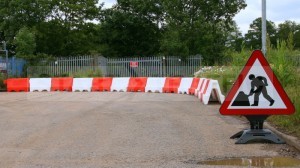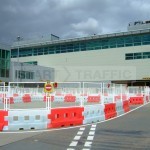There are strict rules on the sizes of traffic cones that can be used within certain speed limits and carriageway layouts. This guide sets out to explain the ins and outs of Cone legislation as detailed in the 1995 Safety at Street works and road works policy.
Primarily Traffic cone size is determined by the speed limit of the road they are to be used on, and also how many carriageways the road consists of.
These regulations are as follows:
30 Mph or Less Single Carriageway.
Cone height must be 450mm or above.
40 Mph or Less Single Carriageway.
Cone Height Must be 450mm or above.
40 Mph Dual Carriageway.
Cone Height Must be 450mm or above.
50 Mph Single Carriageway.
Cone Height Must be 450mm Or above.
50 Mph Dual Carriageway Road.
Cone Height must be 750mm Or above
60 Mph Single Carriageway Road.
Cone Height must be 750mm Or above
60 Mph Dual Carriageway Road.
Cone Height must be 750mm Or above
70 Mph Dual Carriageway Road.
Cone Height must be 750mm Or above
70 Mph Dual Carriageway Road.
Cone Height must be 750mm Or above
Traffic Cones must also follow the following rules:
- The white reflective sleeve must be 40% of the overall height.
- The red portion below the sleeve must be a minimum of 10% of the overall height.
- The red portion at the top of the cone must be a minimum of 25% of the overall height of the cone.
- The base of the cone must be red, black, grey, or brown in colour.
This article follows the basics of size and composition of traffic cones. It is always worth checking the chapter 8 guidelines for any updates or changes to these rules.
 The 1M water filled safety barrier is a compact and sturdy safety barrier. Supplied mainly in red or white colours for increased visibility this 1M barrier system is ideal for use in town and city centres for vehicles. It is designed to be left in place for longer periods of time than the Avalon Safety Barrier due to its heavier weight when filled.
The 1M water filled safety barrier is a compact and sturdy safety barrier. Supplied mainly in red or white colours for increased visibility this 1M barrier system is ideal for use in town and city centres for vehicles. It is designed to be left in place for longer periods of time than the Avalon Safety Barrier due to its heavier weight when filled.